What type of full backs in football can be considered modern? Of course, above all, the main description of the full back is of a wide defender in a back line of four. His responsibilities include attacking and defending duties based on the coach’s game plan. The modern full-back’s duties are at both ends of the pitch; they must support attacks and defend in almost equal measure.
Modern innovative thinking coaches are trying to use all the weapons and strategies they have in their hands to succeed. The evolution of the game and the more advance defending tactics have forced coaches to look for new ways to overcome opponents. The utilization of the center backs and full backs during the attack can offer a very important element, the creation of positional and numerical superiorities and the disorganization of the opponent’s defending lines.
In the last few years, we have seen the full-backs get inside in the attacking phase and play as midfielders or push very high like wingers. Guardiola and Klopp are two coaches who use their fullbacks with many variations. Dani Alves (Barcelona), Cancelo (Manchester City), Trend Alexander Arnold (Liverpool), and Robertson (Liverpool) are full-backs who marked the specific position.
In a system of play that asks so much of the full-back, the profile of a player that fits this role has to display an array of footballing characteristics.
You can read the post about the modern defensive line in a positional play team.
The main position of Full backs in football on the pitch
In the majority of time, full backs in football can have three main positions on the pitch during the attack.
- Wide and high
- Wide and deep
- Inverted (Inside position)
What are the in-possession responsibilities of a modern full-back?
A modern full-back’s main action during the attack is to make constant forward runs with overlaps and underlaps, offer support from deep when a winger has the ball wide and high, and provide support in the ball circulation to the center backs or the midfielders.
After getting into attacking areas, it is the full-back’s job to provide crosses, cut-backs, through balls into wide areas – or to run on to through balls – and switches of play.
Dribbling and driving forward runs over larger distances are also important, while the ability to beat an opponent in one-on-one situations and create is also useful.
Attacking Phase
In the attacking phase, the full-back will push up to offer width or immediate support to advance players. For this reason, the profile of the specific player, besides a great understanding of defensive positioning, has to be of an engine able to run up and down the pitch.
More than that, the player should play a significant role in the ball circulation by passing, receiving, and getting inside between the lines. Furthermore, full-backs today often attempt forward runs behind the opponent’s back lines, in the space, like a regular winger.
The inverted full-back is a modern trend. The reason is that they provide so many variations, possibilities, and options for combinations in the attacking phase.
The modern fullback participates more in the build-up of attacks, especially when playing in positional play teams who utilize ball possession to progress forward. Pep Guardiola is the coach who reborn the concept of the inverted full-backs. First in Bayern with Phillip Lahm and David Alaba and now at Manchester City with Walker and Cancelo.
Of course, to use players as inverted fullbacks or full backs acting like wingers they need to have specific characteristics such as high technical skills, especially in passing, receiving, and feeling comfortable getting in the center of the pitch.
The deep full backs in football
The flanks generally are used by many teams to set pressing traps. A player with the ball by the touchline has fewer options to progress with the ball or make a pass from a player who is located in the center of the pitch. It’s a defensive strategy used very often, to lead opponents to the sidelines.
A common solution against such pressing tactics is to create a back line of three, either with a drop-back midfielder or by keeping one full back at the back. In the first case, both full backs pushed high, and in the 2nd case only one of the two. By having 3 players at the back, a team can pass any first line of pressure with 1 or two opponents. This is because, the defensive line has a more wide structure and with a quick ball circulation, the team can find a free player who can receive and dribble forward toward the midfield line.
The weakness of this structure is that the team will have fewer players in the center of the pitch and the creation of numerical superiorities higher up the pitch becomes more difficult. Even if the build-up is successful and the team will break the first line of pressure, the options to play forwards and through the defensive block can be insufficient.
Another solution then is to build-up with deep full backs. Compared to the solution with a back three, having deeper full-backs means that midfielders can keep their positions between the lines offering passing options higher up the pitch and centrally.
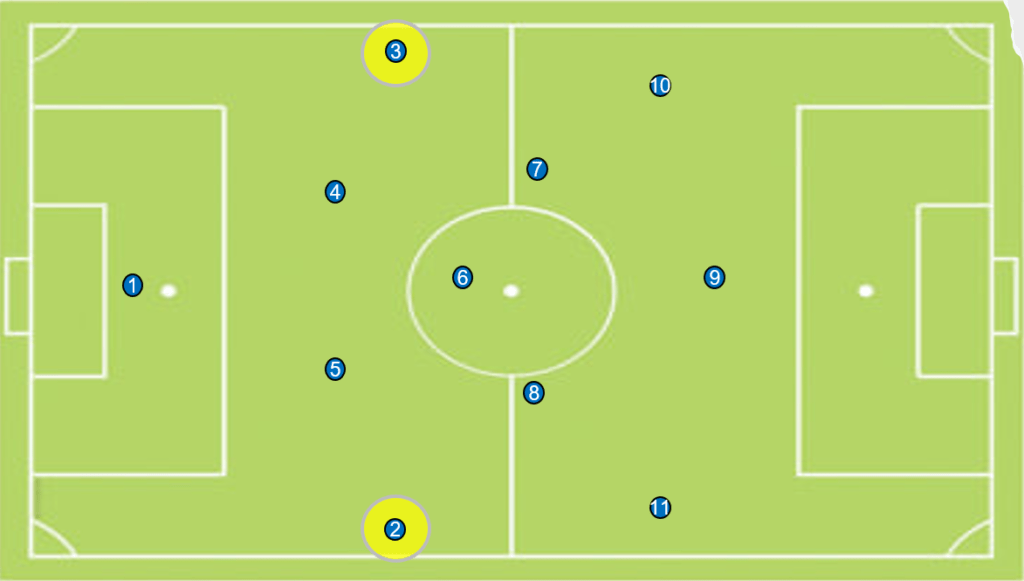
Further up the field, this means that the wingers typically have to stay wider and this can potentially lead to a lower occupation of space behind the opposition midfield line. Although through effective spacing within the structure, this disadvantage can be reduced.
Against a narrow 1st line of pressure (usually with 2 forwards or narrow 3) the use of deep full-backs can be an effective way to reduce or control the pressing from the opponents by increasing the width in the first line of build up. This will make it difficult for the opponents to shift from side to side leaving spaces for the full backs to receive the ball.

Also, against teams who press with 3 forwards and aims to cut the passes to the full backs, the more deep position of the full backs will force the winger to make a more wide curved run, creating more spaces inside for a vertical pass to a midfielder.
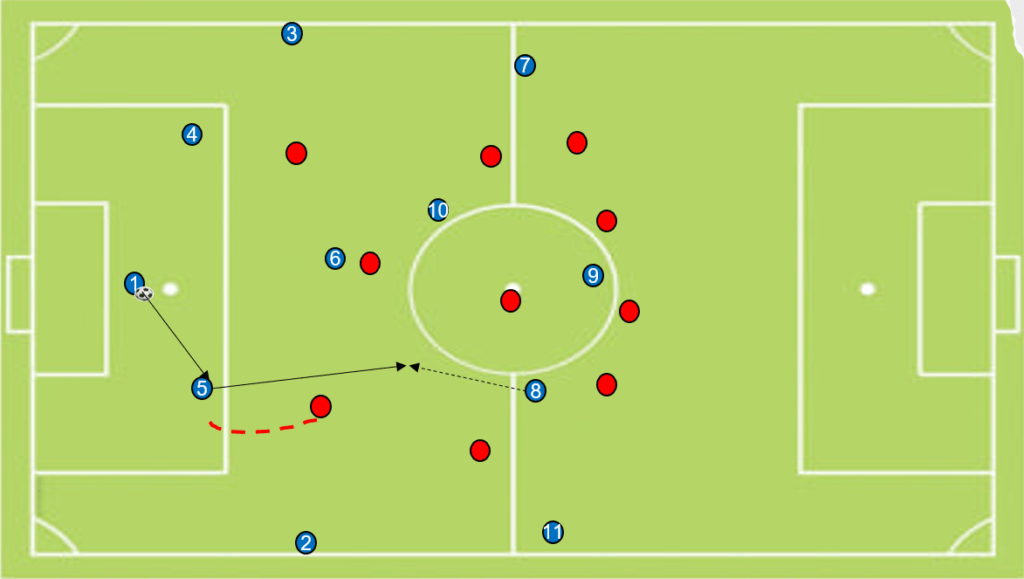
However, the strategic weakness is that in-possession teams do not keep the ball there too long before the opponent can shift across to close out the space. For that reason, the ball must either be circulated back inside through the centre-back or deep midfielder or progressed forwards – either diagonally inside or down the line.
Wide full backs in football
As we know there is a width in every team’s structure. The question often is not whether a team has width, but how and which players are creating the width. Fullbacks can be one way to create this width.
When tasking your full backs with creating width the first thing a coach must take into account is the third of the field the team is in and what are the team’s objectives there.
The second important aspect is to identify how the full backs positions affect the rest of the teammate’s positions around the ball or away from the ball. Does their wide positioning influence the team in a positive or negative way? Finally, how does the wide positioning of the full back affect the opponent’s defensive behavior?
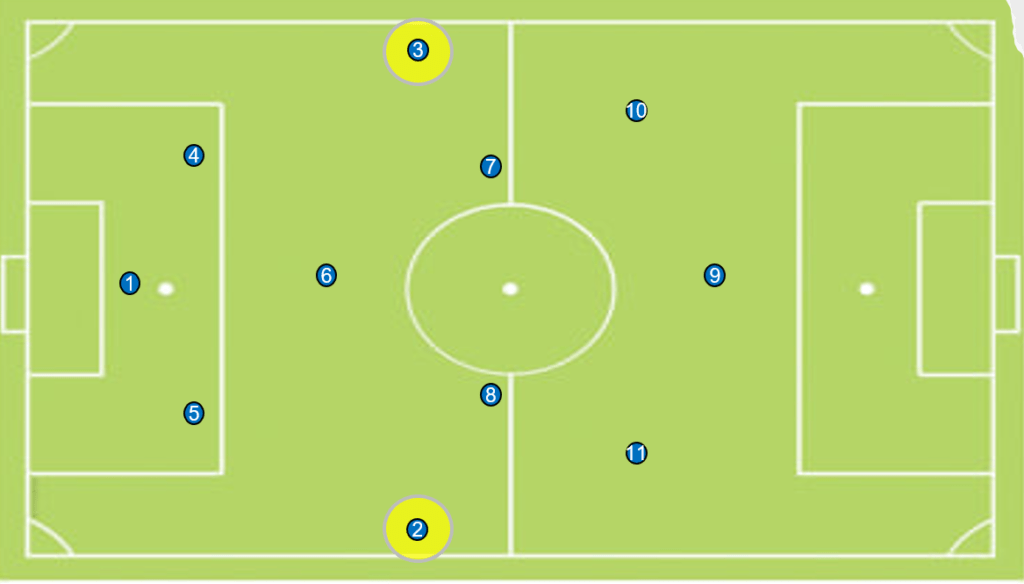
The position of the full backs higher up the pitch and wider creates decision-making problems for the opponents. The front line of pressure and the midfielders behind, due to the greater distances of the defending back line, are forced to be positioned between 2 or 3 players in order to be able to control as much as possible bigger spaces.
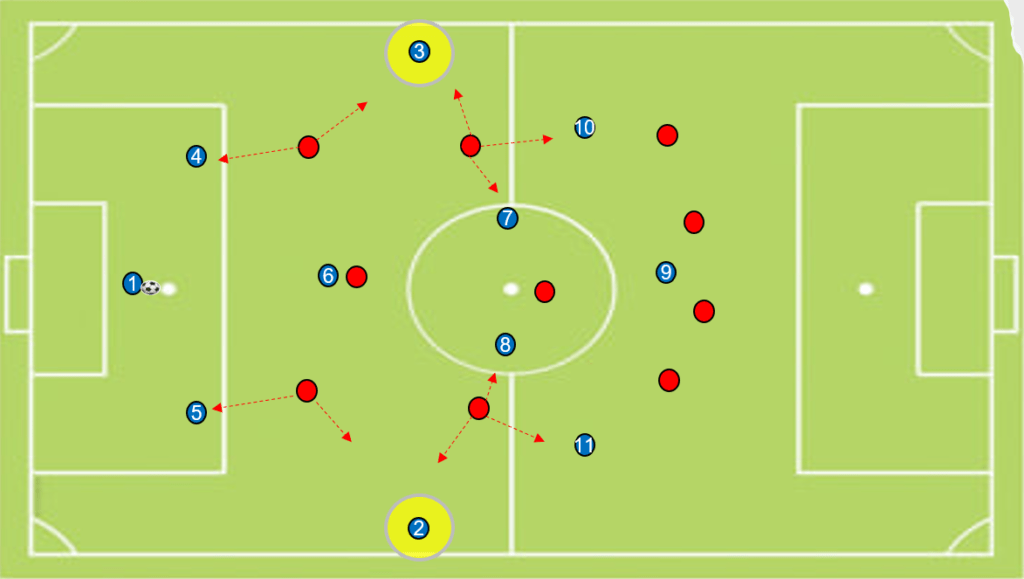
Against high press, the wide full backs offer a long diagonal 2nd line pass that will eliminate 2 or 3 opponents immediately.
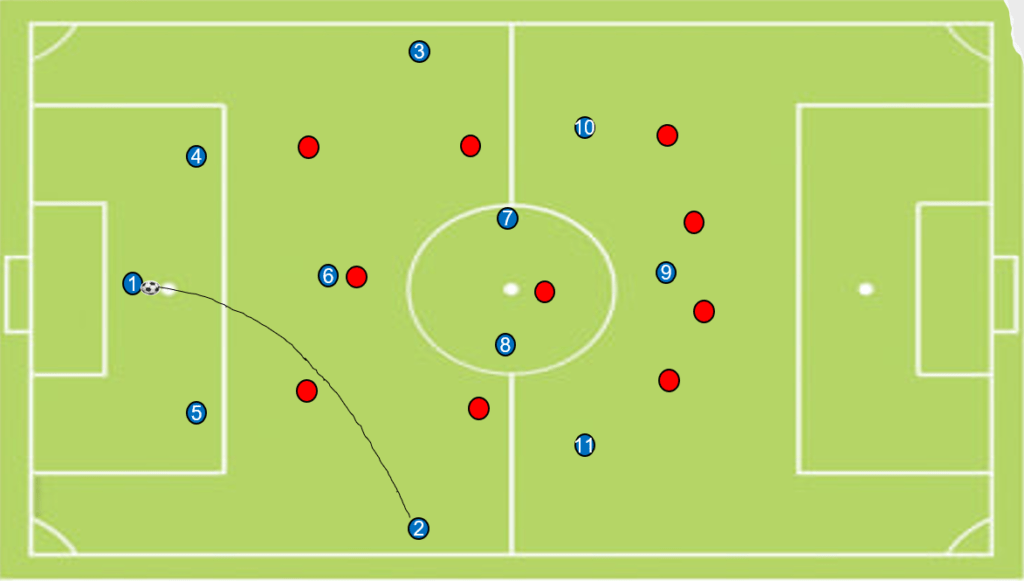
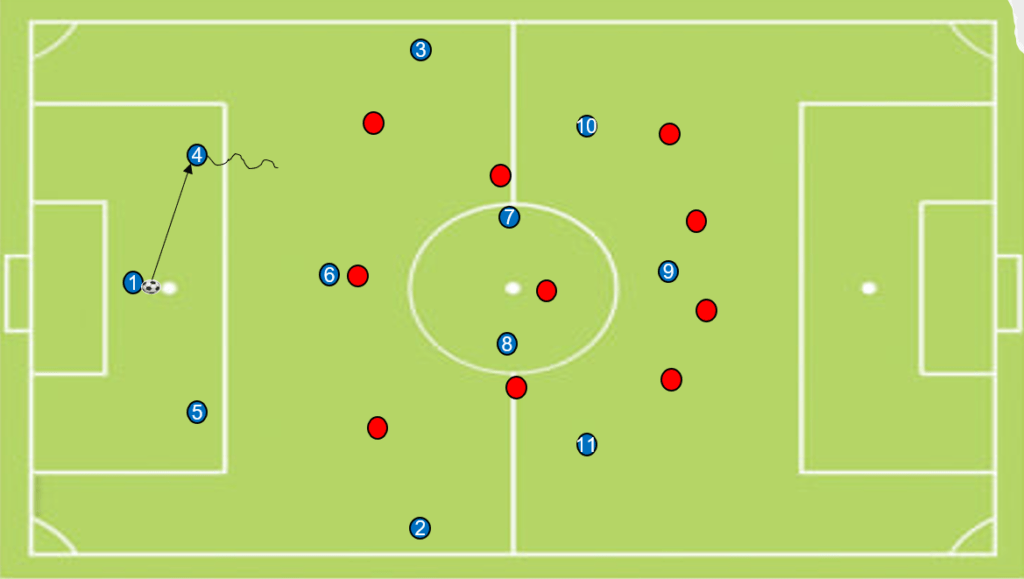
If the wingers push back to position themselves closer to the full backs to 2nd line passes, then the center backs will be free with more time and space. This will give them more central passing lanes but also space to dribble forward and create numerical superiority centrally.
Although the chances of the offensive team progressing the ball right away decrease, the odds that they will progress the ball through the central corridors increase.
The Inverted full backs in football
The modern fullbacks have a more active role in the build-up of attacks, especially when playing in teams that like to start the game from the back using short passing and progressing through the thirds. Usually, this kind of team are using a more positional play football and possession style.
An excellent example of how inverted fullbacks are of importance to building the attack, and arguably the most notable inverted fullbacks, Phillip Lahm and David Alaba in Bayern Munich under Pep Guardiola and Joao Cancelo, Walker and Oleksandr Zinchenko in Manchester City, all of them playing under Pep Guardiola.

A coach can use 1 inverted full back or 2 at the same time. This will depend on his own game ideas but also the skills and characteristics of the full backs.

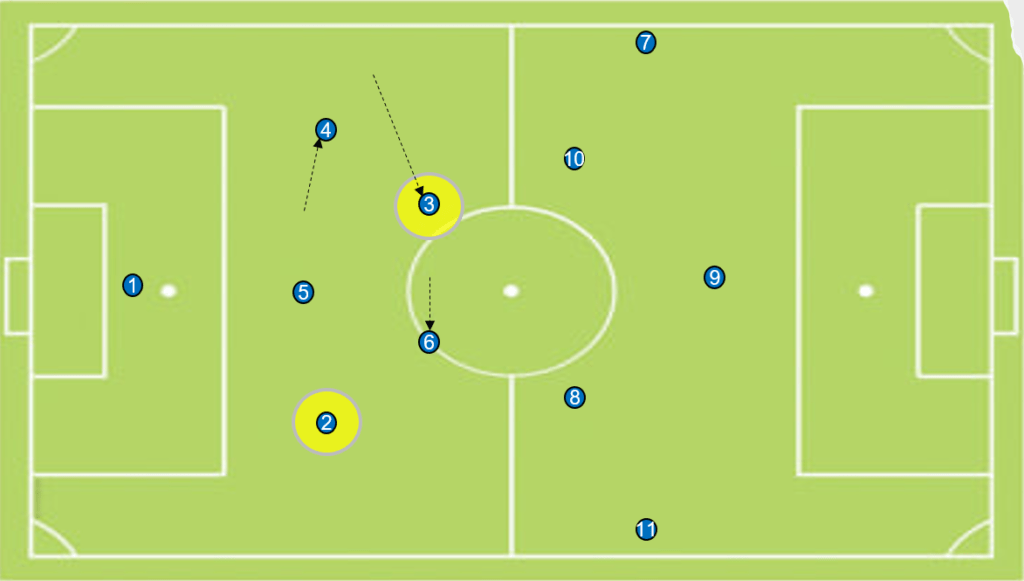
With the fullbacks inverting more centrally, the formation, when typically playing a 4-3-3, shifts to more of a 3-2-2-3 as shown below. This switch creates a two-man pivot when building the attack. The two-man pivot offers more passing options when playing out from the back, through the thirds, and is most effective when playing through the press. As a result of using the inverted fullbacks in this role, it can be a method to outnumber the opposition in midfield 5v3.
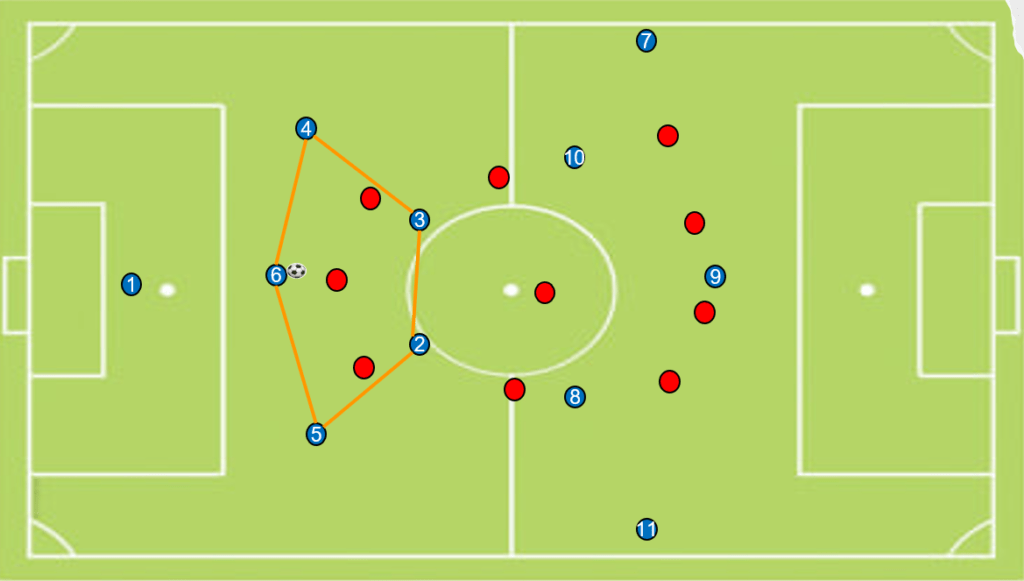
The inverted full backs in football, plays a crucial role in the finishing phase, or the final third. Even if it is a full back, when they shift inside they act like a midfielder. For that reason, they are allowed to execute midfielder’s tactical movements, such as running forwards toward empty spaces.
The inverted fullback can usually underlap in the half-space or rarely overlap the winger.
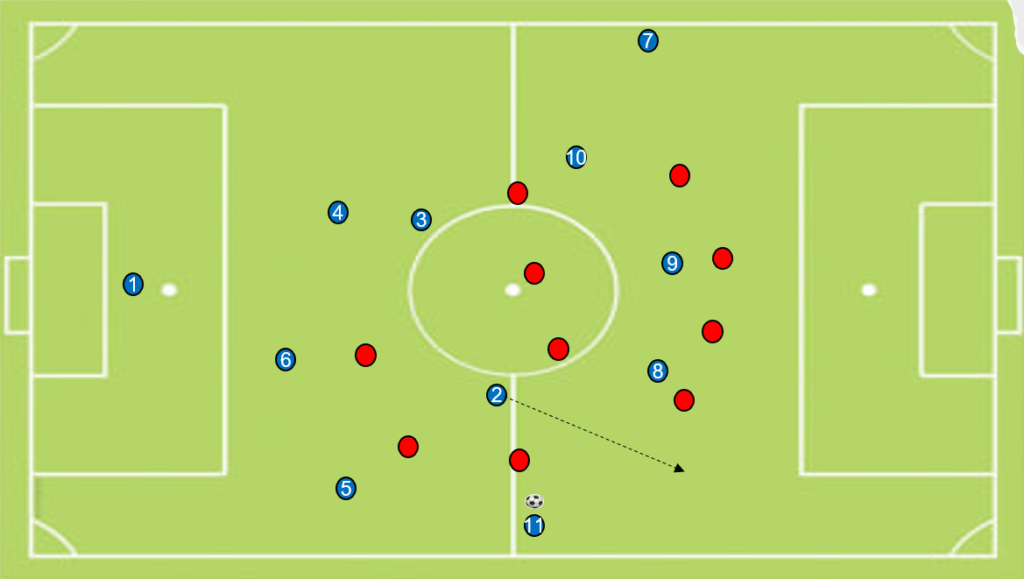
Follow us on Youtube to see Positional and Possession drills
Who are the best modern full-backs in football?
Joao Cancelo
The latest typical example is Cancelo, who is considered to be probably the most completed full-back in the world. He is equally good also in the attacking and the defensive phase. During the attack, he feels comfortable getting inside but also staying in wide areas as a regular full-back.

Trent Alexander Arnold
Under Jürgen Klopp, Alexander-Arnold has been transformed into one of the best full backs in football in the world. He started as a very attacking-minded full-back who was usually positioned high up the pitch.
Due to his involvement in the final third of the pitch, every season he manages to make +12 assists, which is magnificent for a full back. The only season that was under 10 assists (he created 7) was during 2020 – 2021, where Klopp wanted Arnold to stay in a more deep position in order to help his team during the build up because of his tremendous on-the-ball abilities.
He is able to deliver dangerous balls from set pieces but he has also the skill and the fitness of making underlapping and overlapping runs before completing an accurate cross or a cut pass. He has exceptional skills in switching the play, even towards the other wide full back, Robertson. Except for crosses and in-the-air balls, he can break lines with through balls from wide areas.
Jordi Alba
A key component in the great team of Barcelona and Spain back during 2010 – 2020, Alba’s deep overlapping runs offer a constant threat down the left flank, and he benefits from the brilliant passing ability of his teammates. He is often making runs behind the midfield or defensive line to receive direct long or on-the-ground balls.
Alba’s vision, awareness of his teammates’ runs, and ability to adapt his crossing depending on their position are some of his standout traits.
Characteristics of the ideal player’s profile
- High technical skills (especially in passing, receiving, and crossing)
- Ability to run up and down the line (in teams who uses regular full back)
- Understand the space and time (for teams who use inverted full-backs to get inside)
- Good in regards to aggressive and pressing behavior
Main roles of the ideal player’s profile
- Defend in wide areas (leading opponent’s outside or inside depending on the area of the pitch)
- Become a wide winger when in attack
- Become a midfielder and get inside when needed
Conclusion on full backs in football
Playing with an attack-minded full-back allows the wingers or wide midfielders to move inside, outside, or higher up the pitch. It provides much flexibility in the attacking organization of a team by creating numerical and positional superiorities centrally or wide.
Modern full backs in football also provide an option to attack centrally or from wide areas because they can drag opponents strategically to certain areas.
This positioning can also drag the opposition’s winger or wide midfielder back towards their own goal, thereby limiting their own attacking threat.
The coach should decide, mainly based on the full backs individual characteristics, what should be their positioning during the attack.
We would like to hear your opinion!!! Leave your comment below
For more theoretical and practical information on Positional Play you must read the below books:



Top site ,.. amazaing post ! Just keep the work on !